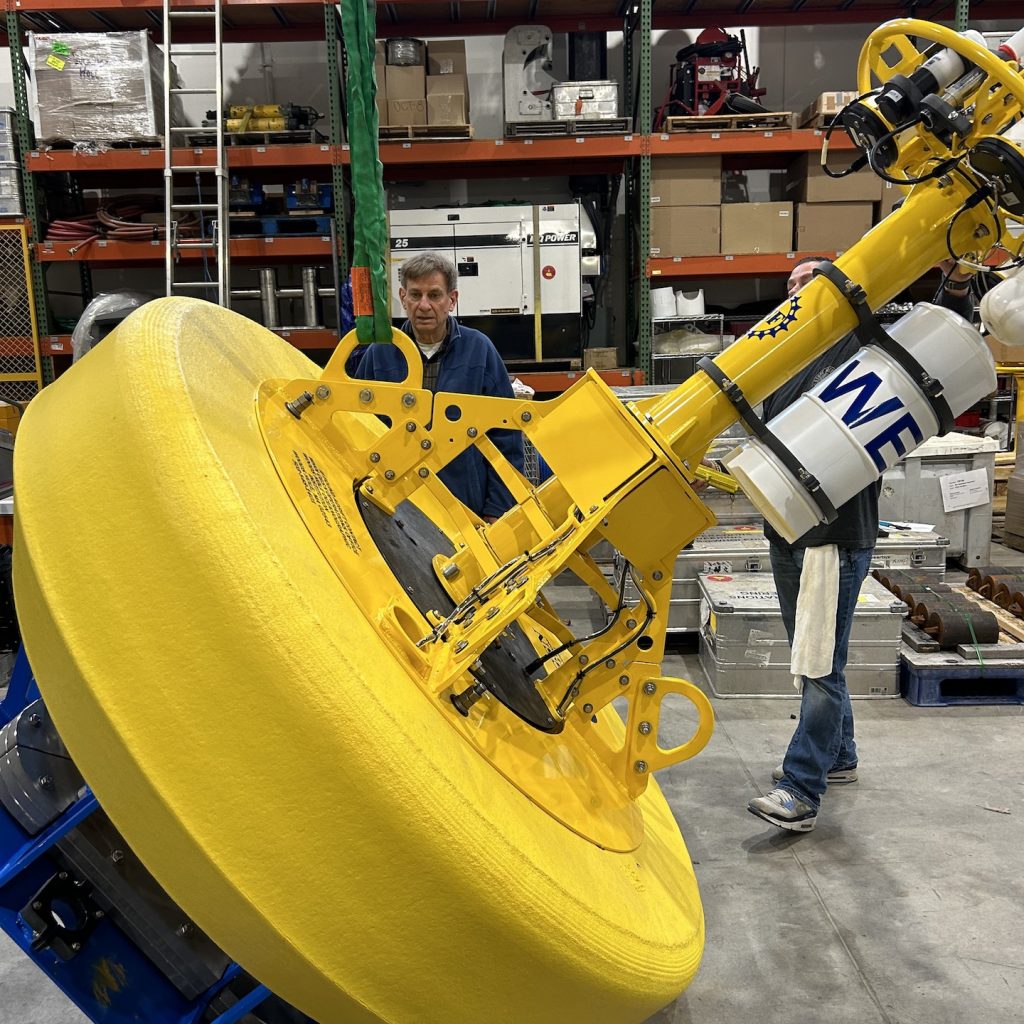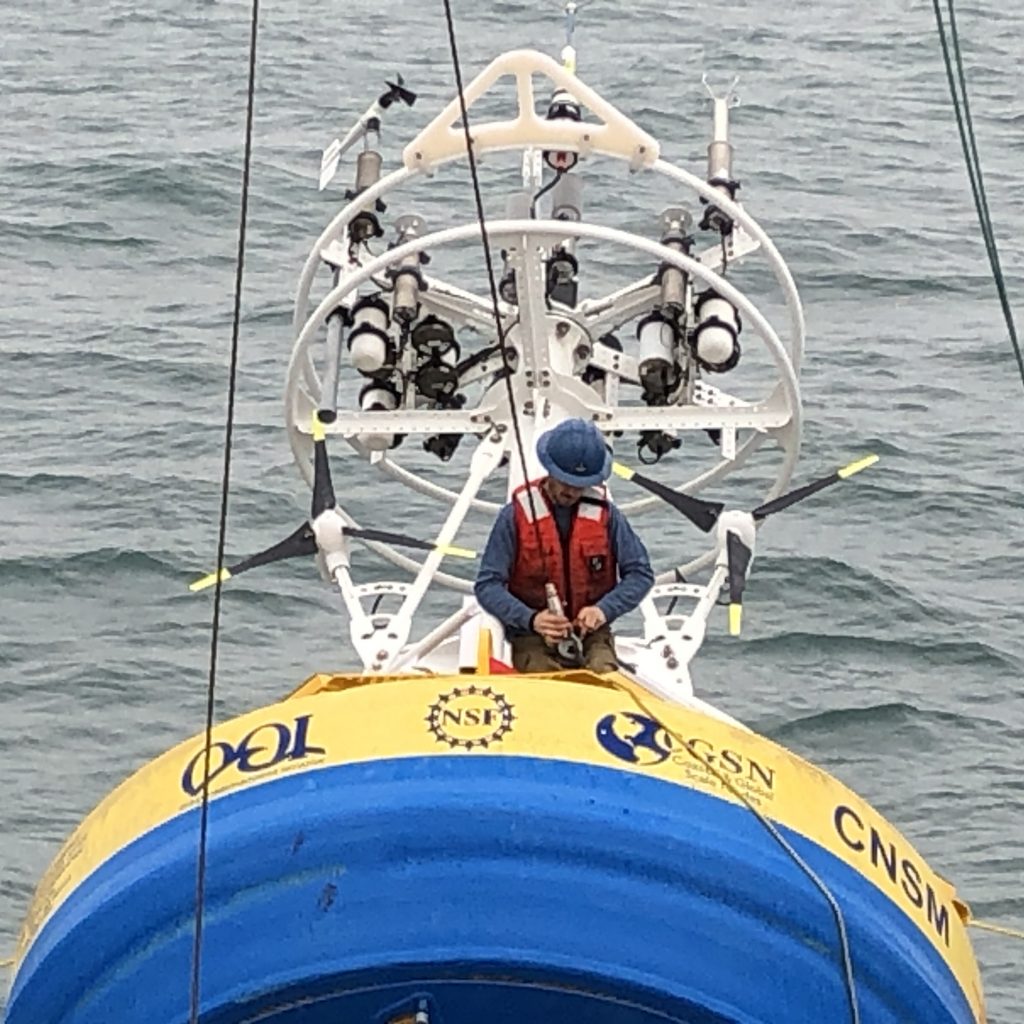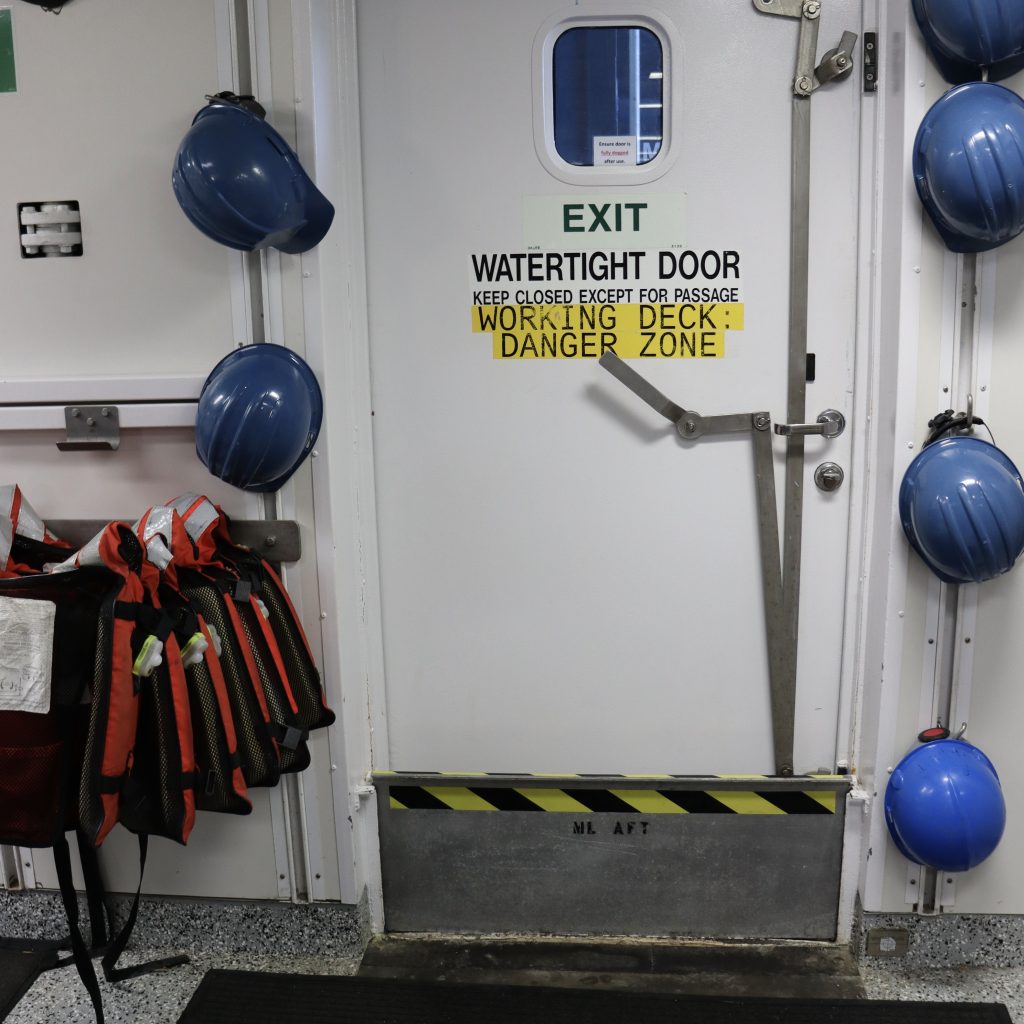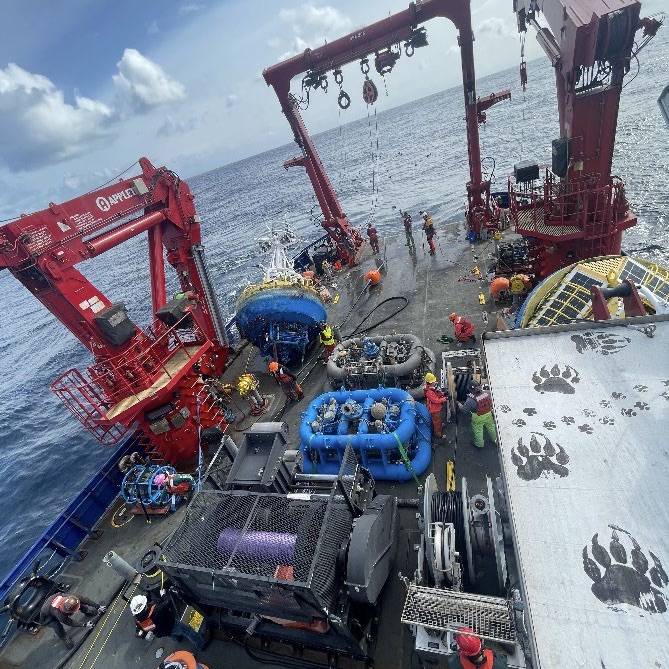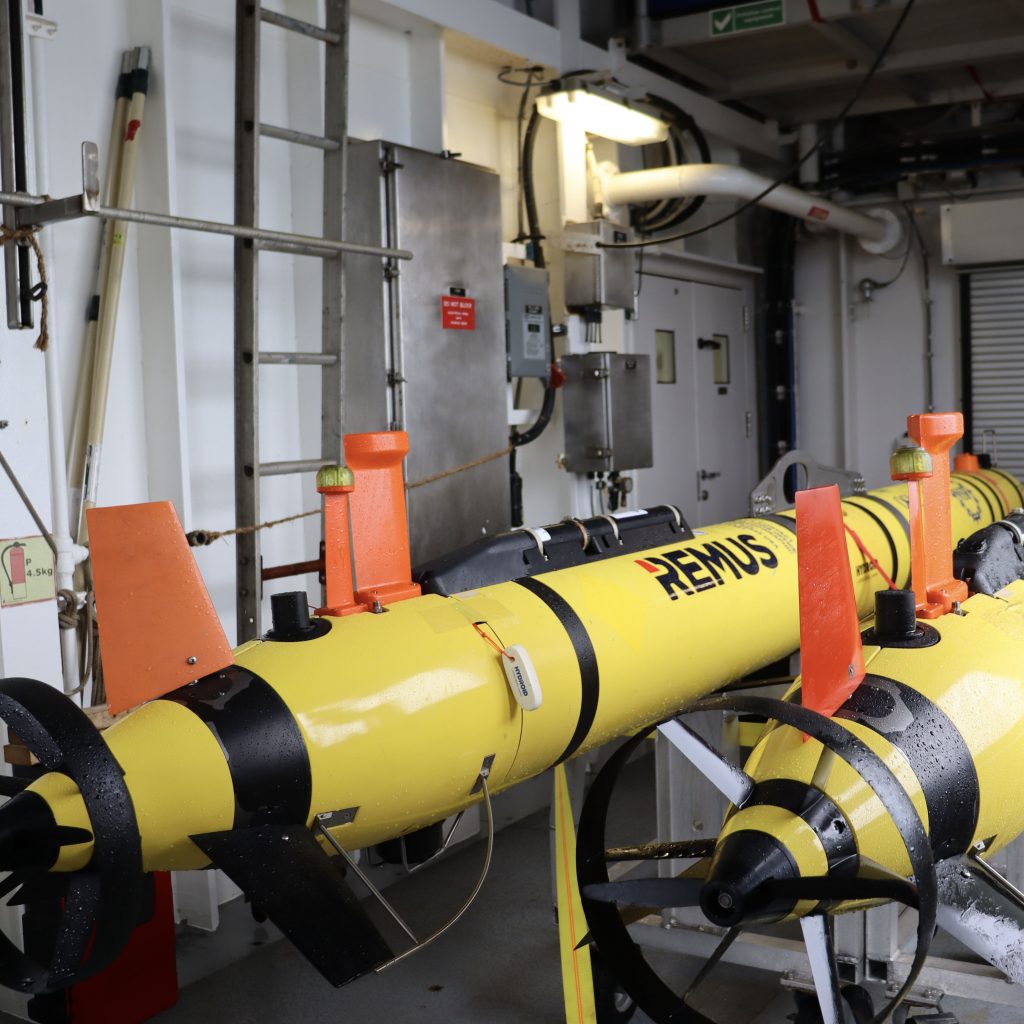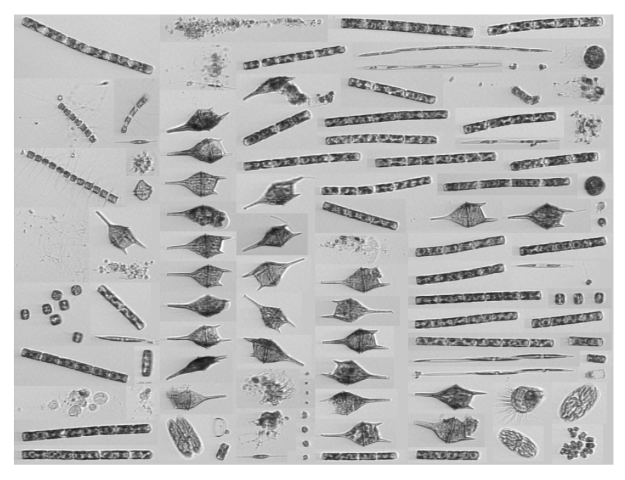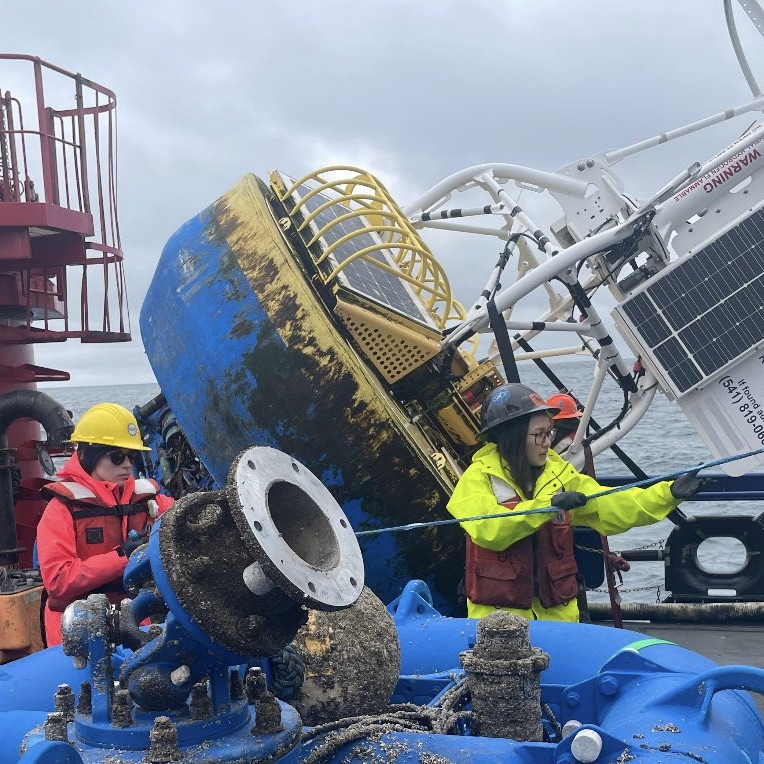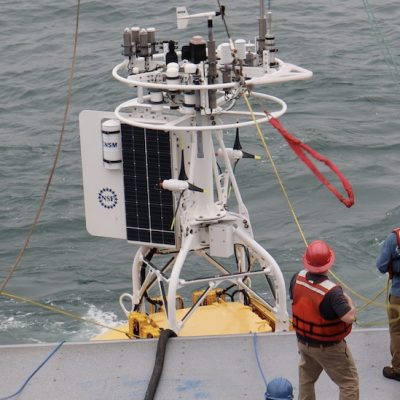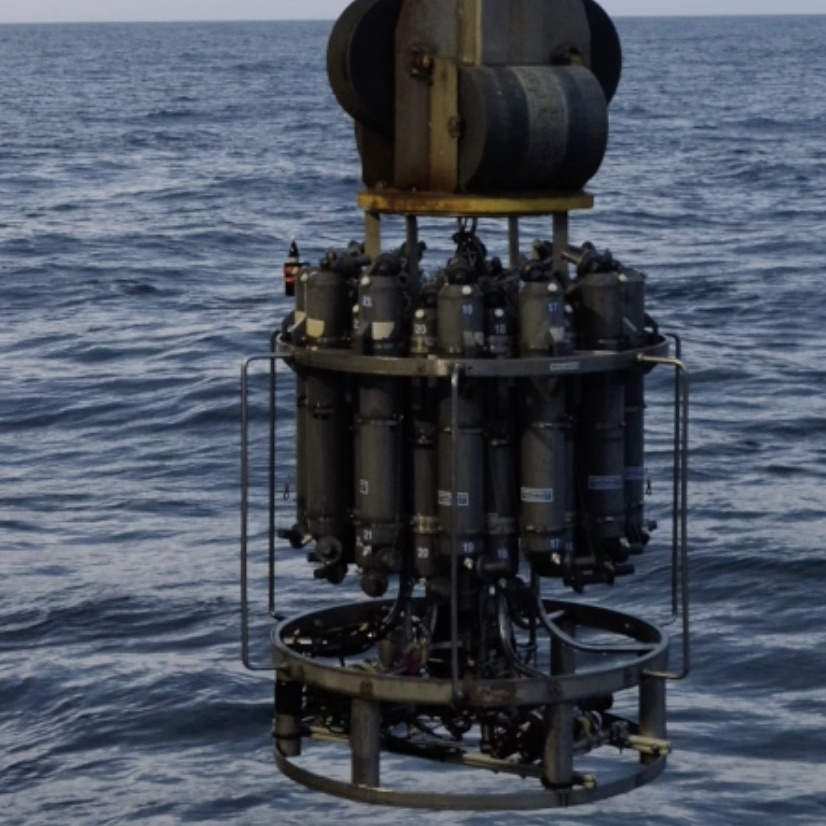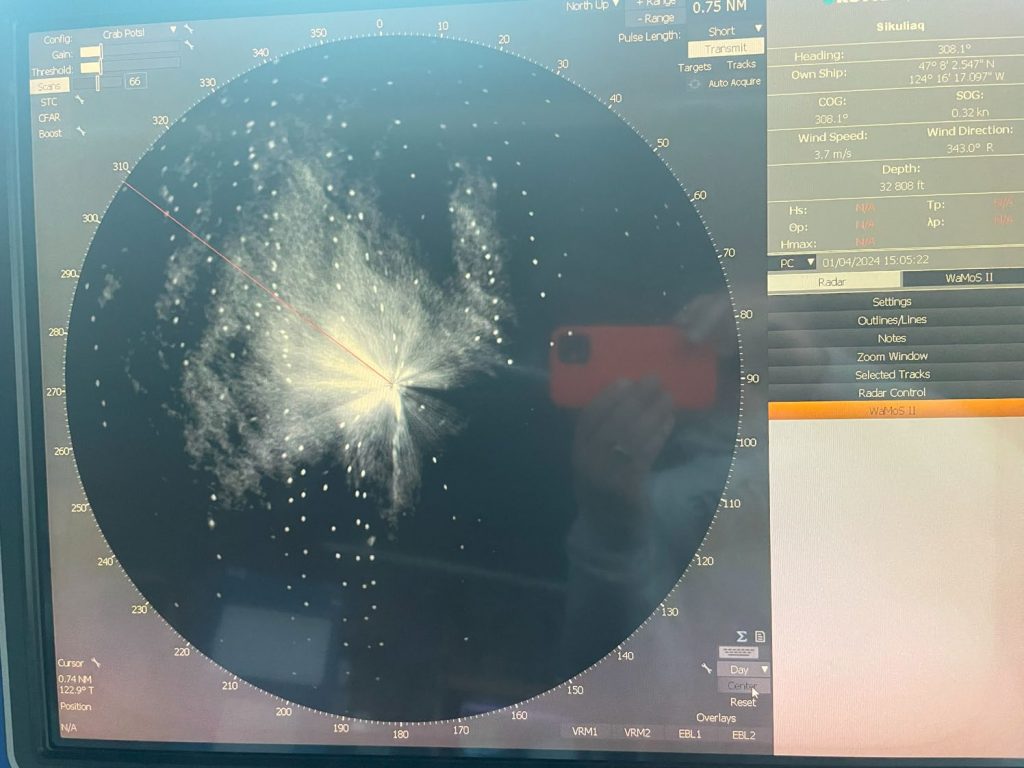Posts by dtrewcrist
Prep Back Home
Don Peters and Kris Newhall measure the dry weight and verify the stability of the Shallow Water Mooring (SWM) buoy. The SWM design developed by WHOI Principal Engineer Don Peters, when combined with the Prawler profiling vehicle and instruments on the buoy hull, will be able to sample the upper 80% of the water…
Read MoreSecond Mooring Deployed
The second mooring of the Coastal Pioneer Array MAB, the North Central Surface Mooring, was successfully deployed today from the R/V Neil Armstrong. The team made it look easy! For those who lack time, we’ve sped it up to give you an idea of what’s entailed.
Read MoreFrolicking Sea State
The sea was rocking and rolling a little bit yesterday causing the “wet lab” where we work aboard the R/V Neil Armstrong to live up to its name. The metal door jam at the bottom with yellow and black tape was installed as a preventive measure to keep the working space dry. Credit: DT Crist © WHOI.
Read MoreWinches and Cranes Galore
Working smarter, not harder. A picture of many heavy objects being moved without anyone carrying anything by hand aboard the R/V Sikuliaq during the Endurance 20 expedition. Note the bear tracks on the roof in recognition of Oregon State University’s mascot, “Benny the Bear.”
Read MoreRemarkable Underwater Robot
Two REMUS 600 autonomous underwater vehicles (AUVs) are components of the Coastal Pioneer Array at its new location in the Mid-Atlantic Bight (MAB). Their mission is to collect data through the water column and in between moorings, serving as an additional data source and validating data collected at the stationary moorings. The two AUVs at…
Read MoreHistoric, Continuing Collaboration
The U.S. National Science Foundation Ocean Observatories Initiative (NSF-OOI) and the Northeast U.S. Shelf (NES) Long-Term Ecological Research (LTER) project have been collaborating since 2017, when the original OOI Coastal Pioneer Array was deployed 75 nautical miles off the coast of Martha’s Vineyard. Representatives from the NES-LTER project would join the Pioneer Deployment and Recovery expeditions in…
Read MoreUNOLS Volunteers Pitch In
The Endurance 20 team includes two UNOLS Cruise Volunteers on each leg. These volunteers are graduate students looking for opportunities to go to sea. On this leg, Marlena Penn and Cassia Cai joined the Endurance 20 team aboard the R/V Sikuliaq.
Read MoreFirst of First
This morning, April 3, 2024, marked the beginning of the Coastal Pioneer Array in its new location in the Mid-Atlantic Bight. The team began prepping for the deployment of the Central Surface Mooring (CNSM-1) at 6 am Eastern. The mooring was in the water and its instruments functioning shortly after 9 am. Well done, team!
Read MoreCTD Casts While Underway
During transit to the Mid-Atlantic Bight from Woods Hole, the team conducted CTD sampling to continue the work of The Northeast U.S. Shelf (NES) Long-Term Ecological Research (LTER), which strives to understand and predict how planktonic food webs are changing in the region and possible impacts on higher trophic levels.
Read MoreCrabs Galore
Image of crab pots surrounding the ship as the R/V Sikuliaq and the Endurance 20 team were adjacent to the Washington Inshore Surface Mooring. The primary purpose of this radar is to detect sea ice, but it works well on crab pot floats too. The circle’s radius is ¾ nm.
Read More